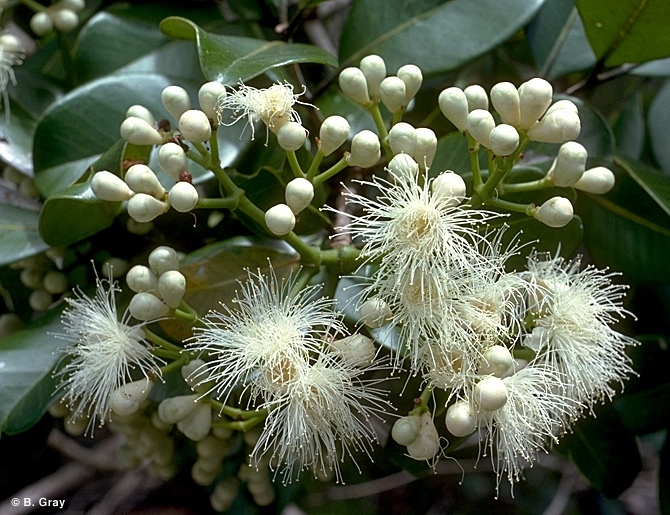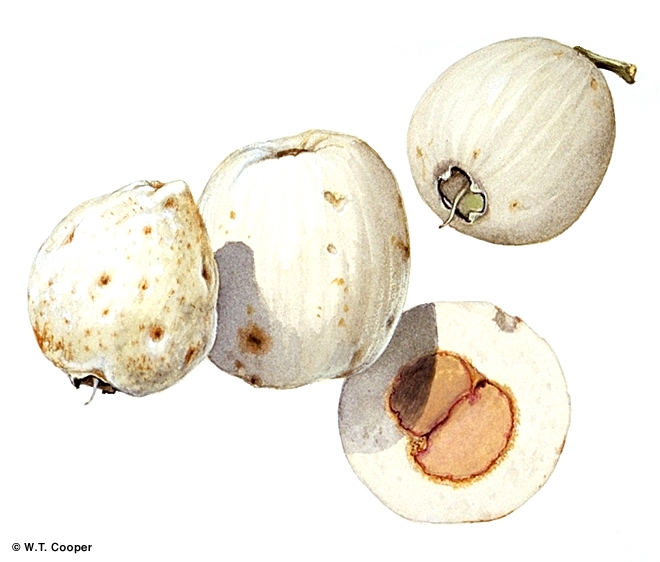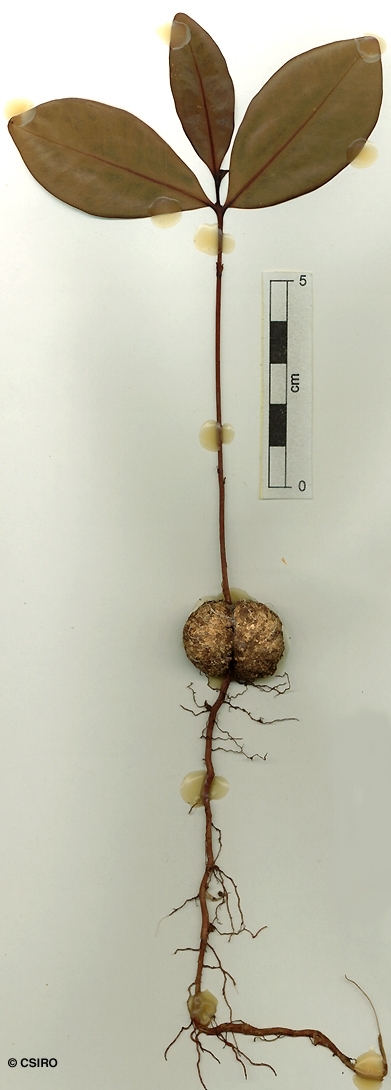Australian Tropical Rainforest Plants - Online edition
Syzygium forte (F.Muell.) B.Hyland subsp. forte





Hyland, B.P.M. (1983) Australian Journal of Botany Supplementary Series 9: 89.
Watergum; Satinash, Brown; Satinash, Flaky Barked; Flaky Barked Satinash; Brown Satinash; Apple, White; White Apple
Bark brown to orange brown, tending to be papery.
Leaf blades rather large, about 7-14 x 4-9 cm, thick and leathery, about 8-15 pairs of lateral veins. Oil dots visible with a lens if not visible to the naked eye. Larger twigs with papery or flaky bark.
Bracts present or absent at anthesis. Calyx tube (hypanthium) + pedicel about 6-12 mm long, calyx tube (hypanthium) about 6-8 mm diam., calyx lobes +/- uniform (sometimes one lobe longer than the rest), rounded to broadly triangular, about 1-2 mm long. Petals +/- orbicular, shortly clawed, about 6 mm diam., oil dots visible, smallish, about 100 per petal. Outer staminal filaments about 9-18 mm long, anthers about 0.8-1 x 0.7 mm, gland dorsal, near the apex of the anther. Ovules about 25-35 per locule, placentas central, ovules radiating, ascending. Style about 8-14 mm long, shorter than the stamens.
Fruits depressed globular, globular-ovoid or doliform, about 30-40 x 30-40 mm, calyx lobes persistent, about 2 mm long, pericarp fleshy, but coarsely granular close to the seed. Seed solitary, globular, slightly bilobed, about 10-25 mm diam., testa adhering to the pericarp and adhering slightly to the rugose surface of the cotyledons by means of granular horny intrusions, cotyledons uniformly textured except for the +/- ruminate peripheral section.
Fallen fruit eaten by Cassowaries. Cooper & Cooper (1994). This species has potential in horticulture as a shade tree for parks and gardens and as a street tree. Can withstand strong winds and has large white flowers and fruits.
This subspecies occasionally produces millable logs which are marketed under the trade name of Flaky-barked Satinash. Wood specific gravity 0.69-0.96. The fruit is sometimes eaten but has no commercial value. Hyland (1983).





